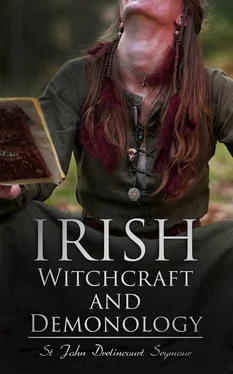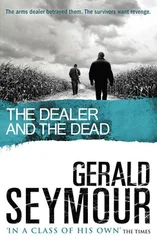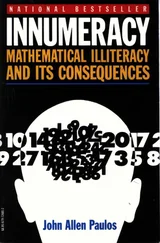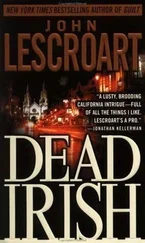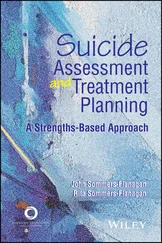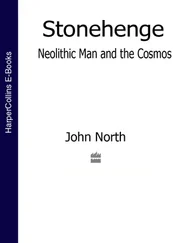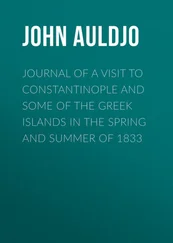St John Drelincourt Seymour - Irish Witchcraft and Demonology
Здесь есть возможность читать онлайн «St John Drelincourt Seymour - Irish Witchcraft and Demonology» — ознакомительный отрывок электронной книги совершенно бесплатно, а после прочтения отрывка купить полную версию. В некоторых случаях можно слушать аудио, скачать через торрент в формате fb2 и присутствует краткое содержание. Жанр: unrecognised, на английском языке. Описание произведения, (предисловие) а так же отзывы посетителей доступны на портале библиотеки ЛибКат.
- Название:Irish Witchcraft and Demonology
- Автор:
- Жанр:
- Год:неизвестен
- ISBN:нет данных
- Рейтинг книги:4 / 5. Голосов: 1
-
Избранное:Добавить в избранное
- Отзывы:
-
Ваша оценка:
- 80
- 1
- 2
- 3
- 4
- 5
Irish Witchcraft and Demonology: краткое содержание, описание и аннотация
Предлагаем к чтению аннотацию, описание, краткое содержание или предисловие (зависит от того, что написал сам автор книги «Irish Witchcraft and Demonology»). Если вы не нашли необходимую информацию о книге — напишите в комментариях, мы постараемся отыскать её.
Irish Witchcraft and Demonology — читать онлайн ознакомительный отрывок
Ниже представлен текст книги, разбитый по страницам. Система сохранения места последней прочитанной страницы, позволяет с удобством читать онлайн бесплатно книгу «Irish Witchcraft and Demonology», без необходимости каждый раз заново искать на чём Вы остановились. Поставьте закладку, и сможете в любой момент перейти на страницу, на которой закончили чтение.
Интервал:
Закладка:
CHAPTER II
Table of Contents
A.D. 1324
Dame Alice Kyteler, the Sorceress of Kilkenny
The history of the proceedings against Dame Alice Kyteler and her confederates on account of their dealings in unhallowed arts is to be found in a MS. in the British Museum, and has been edited amongst the publications of the Camden Society by Thomas Wright, who considers it to be a contemporary narrative. Good modern accounts of it are given in the same learned antiquary’s “Narratives of Witchcraft and Sorcery” in Transactions of the Ossory Archæological Society , vol. i., and in the Rev. Dr. Carrigan’s History of the Diocese of Ossory , vol. i.
Dame Alice Kyteler (such apparently being her maiden name), the facile princeps of Irish witches, was a member of a good Anglo-Norman family that had been settled in the city of Kilkenny for many years. The coffin-shaped tombstone of one of her ancestors, Jose de Keteller, who died in 128—, is preserved at S. Mary’s church; the inscription is in Norman-French and the lettering is Lombardic. The lady in question must have been far removed from the popular conception of a witch as an old woman of striking ugliness, or else her powers of attraction were very remarkable, for she had succeeded in leading four husbands to the altar. She had been married, first, to William Outlawe of Kilkenny, banker; secondly, to Adam le Blund of Callan; thirdly, to Richard de Valle—all of whom she was supposed to have got rid of by poison; and fourthly, to Sir John le Poer, whom it was said she deprived of his natural senses by philtres and incantations.
The Bishop of Ossory at this period was Richard de Ledrede, a Franciscan friar, and an Englishman by birth. He soon learnt that things were not as they should be, for when making a visitation of his diocese early in 1324 he found by an Inquisition, in which were five knights and numerous nobles, that there was in the city a band of heretical sorcerers, at the head of whom was Dame Alice. The following charges were laid against them.
1. They had denied the faith of Christ absolutely for a year or a month, according as the object they desired to gain through sorcery was of greater or less importance. During all that period they believed in none of the doctrines of the Church; they did not adore the Body of Christ, nor enter a sacred building to hear mass, nor make use of consecrated bread or holy water.
2. They offered in sacrifice to demons living animals, which they dismembered, and then distributed at cross-roads to a certain evil spirit of low rank, named the Son of Art.
3. They sought by their sorcery advice and responses from demons.
4. In their nightly meetings they blasphemously imitated the power of the Church by fulminating sentence of excommunication, with lighted candles, even against their own husbands, from the sole of their foot to the crown of their head, naming each part expressly, and then concluded by extinguishing the candles and by crying Fi! Fi! Fi! Amen .
5. In order to arouse feelings of love or hatred, or to inflict death or disease on the bodies of the faithful, they made use of powders, unguents, ointments, and candles of fat, which were compounded as follows. They took the entrails of cocks sacrificed to demons, certain horrible worms, various unspecified herbs, dead men’s nails, the hair, brains, and shreds of the cerements of boys who were buried unbaptized, with other abominations, all of which they cooked, with various incantations, over a fire of oak-logs in a vessel made out of the skull of a decapitated thief.
6. The children of Dame Alice’s four husbands accused her before the Bishop of having killed their fathers by sorcery, and of having brought on them such stolidity of their senses that they bequeathed all their wealth to her and her favourite son, William Outlawe, to the impoverishment of the other children. They also stated that her present husband, Sir John le Poer, had been reduced to such a condition by sorcery and the use of powders that he had become terribly emaciated, his nails had dropped off, and there was no hair left on his body. No doubt he would have died had he not been warned by a maid-servant of what was happening, in consequence of which he had forcibly possessed himself of his wife’s keys, and had opened some chests in which he found a sackful of horrible and detestable things which he transmitted to the bishop by the hands of two priests.
7. The said dame had a certain demon, an incubus, named Son of Art, or Robin son of Art, who had carnal knowledge of her, and from whom she admitted that she had received all her wealth. This incubus made its appearance under various forms, sometimes as a cat, or as a hairy black dog, or in the likeness of a negro (Æthiops), accompanied by two others who were larger and taller than he, and of whom one carried an iron rod.
According to another source the sacrifice to the evil spirit is said to have consisted of nine red cocks, and nine peacocks’ eyes. Dame Alice was also accused of having “swept the streets of Kilkenny betweene compleine and twilight, raking all the filth towards the doores of hir sonne William Outlawe, murmuring secretly with hir selfe these words:
“To the house of William my sonne
Hie all the wealth of Kilkennie towne.”
On ascertaining the above the Bishop wrote to the Chancellor of Ireland, Roger Outlawe, who was also Prior of the Preceptory of Kilmainham, for the arrest of these persons. Upon this William Outlawe formed a strong party to oppose the Bishop’s demands, amongst which were the Chancellor, his near relative, and Sir Arnold le Poer, the Seneschal of Kilkenny, who was probably akin to Dame Alice’s fourth husband. The Chancellor in reply wrote to the Bishop stating that a warrant for arrest could not be obtained until a public process of excommunication had been in force for forty days, while Sir Arnold also wrote requesting him to withdraw the case, or else to ignore it. Finding such obstacles placed in his way the Bishop took the matter into his own hands, and cited the Dame, who was then in her son’s house in Kilkenny, to appear before him. As might be expected, she ignored the citation, and fled immediately.
Foiled in this, he cited her son William for heresy. Upon this Sir Arnold came with William to the Priory of Kells, where De Ledrede was holding a visitation, and besought him not to proceed further in the matter. Finding entreaty useless he had recourse to threats, which he speedily put into execution. As the Bishop was going forth on the following day to continue his visitation he was met on the confines of the town of Kells by Stephen le Poer, bailiff of the cantred of Overk, and a posse of armed men, by whom he was arrested under orders from Sir Arnold, and lodged the same day in Kilkenny jail. This naturally caused tremendous excitement in the city. The place became ipso facto subject to an interdict; the Bishop desired the Sacrament, and it was brought to him in solemn procession by the Dean and Chapter. All the clergy, both secular and religious, flocked from every side to the prison to offer their consolation to the captive, and their feelings were roused to the highest pitch by the preaching of a Dominican, who took as his text, Blessed are they which are persecuted , &c. Seeing this, William Outlawe nervously informed Sir Arnold of it, who thereupon decided to keep the Bishop in closer restraint, but subsequently changed his mind, and allowed him to have companions with him day and night, and also granted free admission to all his friends and servants.
After De Ledrede had been detained in prison for seventeen days, and Sir Arnold having thereby attained his end, viz. that the day on which William Outlawe was cited to appear should in the meantime pass by, he sent by the hands of his uncle the Bishop of Leighlin (Miler le Poer), and the sheriff of Kilkenny a mandate to the constable of the prison to liberate the Bishop. The latter refused to sneak out like a released felon, but assumed his pontificals, and, accompanied by all the clergy and a throng of people, made his way solemnly to S. Canice’s Cathedral, where he gave thanks to God. With a pertinacity we cannot but admire he again cited William Outlawe by public proclamation to appear before him, but before the day arrived the Bishop was himself cited to answer in Dublin for having placed an interdict on his diocese. He excused himself from attending on the plea that the road thither passed through the lands of Sir Arnold, and that in consequence his life would be in danger.
Читать дальшеИнтервал:
Закладка:
Похожие книги на «Irish Witchcraft and Demonology»
Представляем Вашему вниманию похожие книги на «Irish Witchcraft and Demonology» списком для выбора. Мы отобрали схожую по названию и смыслу литературу в надежде предоставить читателям больше вариантов отыскать новые, интересные, ещё непрочитанные произведения.
Обсуждение, отзывы о книге «Irish Witchcraft and Demonology» и просто собственные мнения читателей. Оставьте ваши комментарии, напишите, что Вы думаете о произведении, его смысле или главных героях. Укажите что конкретно понравилось, а что нет, и почему Вы так считаете.
